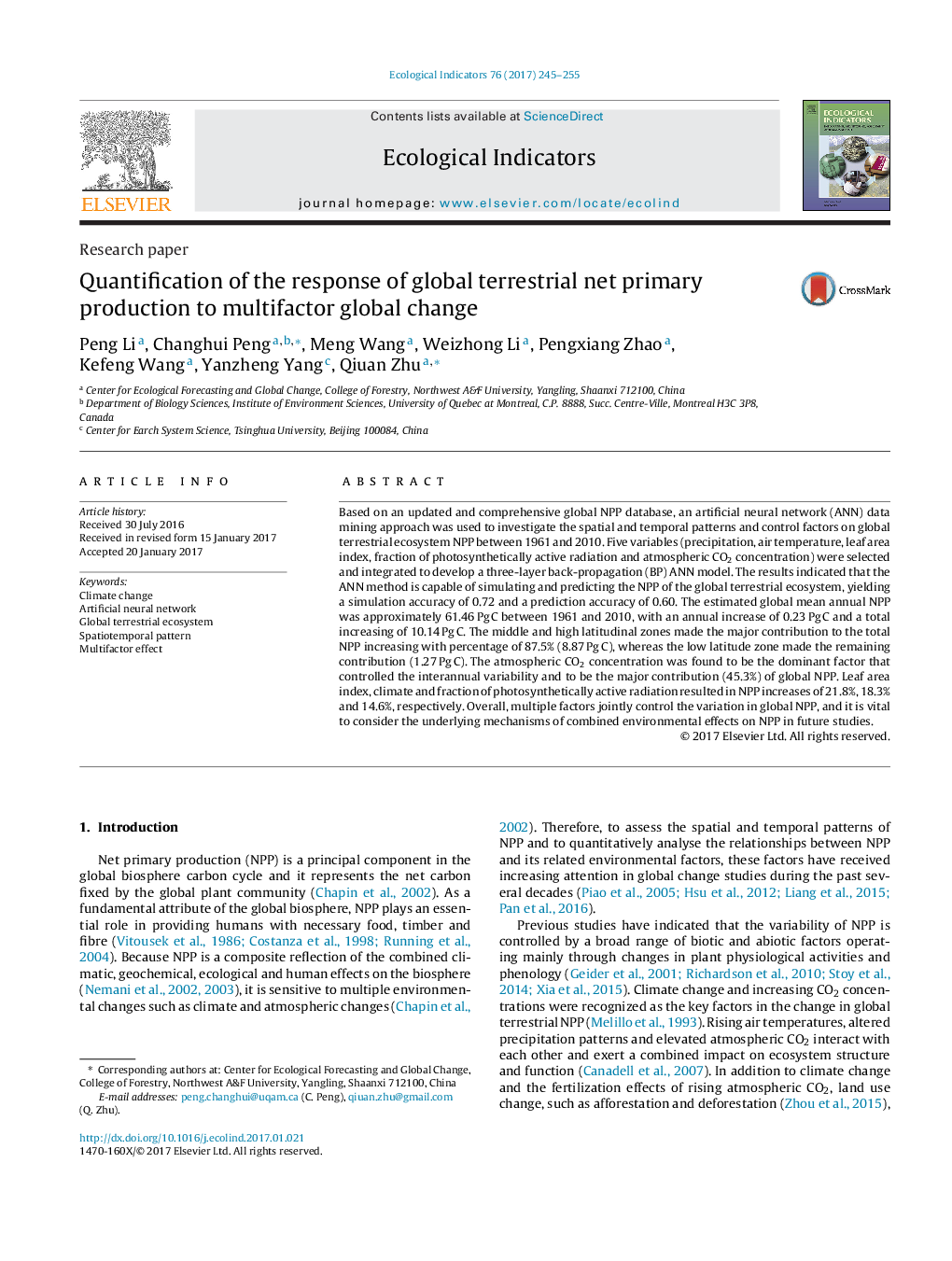| Article ID | Journal | Published Year | Pages | File Type |
|---|---|---|---|---|
| 5741689 | Ecological Indicators | 2017 | 11 Pages |
Abstract
Based on an updated and comprehensive global NPP database, an artificial neural network (ANN) data mining approach was used to investigate the spatial and temporal patterns and control factors on global terrestrial ecosystem NPP between 1961 and 2010. Five variables (precipitation, air temperature, leaf area index, fraction of photosynthetically active radiation and atmospheric CO2 concentration) were selected and integrated to develop a three-layer back-propagation (BP) ANN model. The results indicated that the ANN method is capable of simulating and predicting the NPP of the global terrestrial ecosystem, yielding a simulation accuracy of 0.72 and a prediction accuracy of 0.60. The estimated global mean annual NPP was approximately 61.46 Pg C between 1961 and 2010, with an annual increase of 0.23 Pg C and a total increasing of 10.14 Pg C. The middle and high latitudinal zones made the major contribution to the total NPP increasing with percentage of 87.5% (8.87 Pg C), whereas the low latitude zone made the remaining contribution (1.27 Pg C). The atmospheric CO2 concentration was found to be the dominant factor that controlled the interannual variability and to be the major contribution (45.3%) of global NPP. Leaf area index, climate and fraction of photosynthetically active radiation resulted in NPP increases of 21.8%, 18.3% and 14.6%, respectively. Overall, multiple factors jointly control the variation in global NPP, and it is vital to consider the underlying mechanisms of combined environmental effects on NPP in future studies.
Related Topics
Life Sciences
Agricultural and Biological Sciences
Ecology, Evolution, Behavior and Systematics
Authors
Peng Li, Changhui Peng, Meng Wang, Weizhong Li, Pengxiang Zhao, Kefeng Wang, Yanzheng Yang, Qiuan Zhu,
